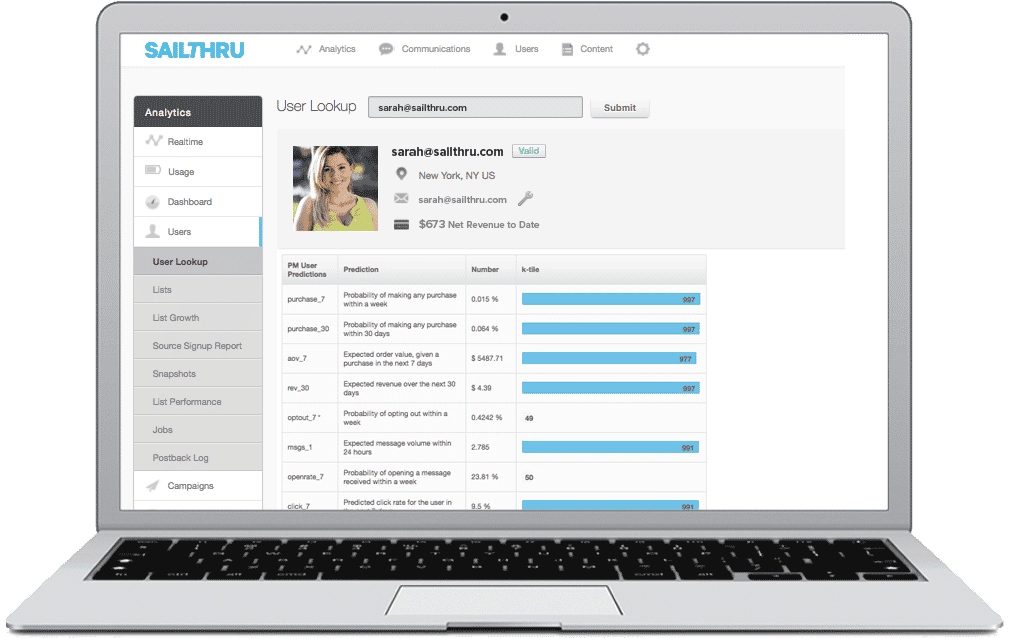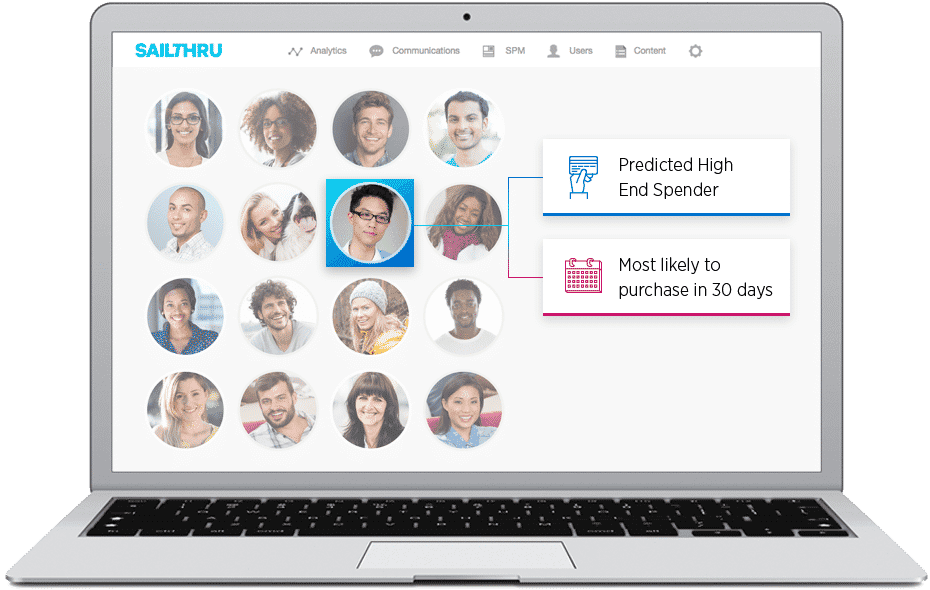Article
Our Top 3 Takeaways from Gartner’s Magic Quadrant Report
June 27, 2018

Any marketing leader planning to re-evaluate their multichannel campaign technologies in the next year should be referring to Gartner’s 2018 Magic Quadrant for Multichannel Marketing Hubs.
Out of the thousands of technologies that enable data collection, management, and message delivery across email, web, mobile, display, and other channels, few are positioned in the Magic Quadrant. Marigold Engage by Sailthru, proud to be one of those companies.
Multiple themes are presented in the research, but in our opinion, three stand out above the others in their impact to reshaping how marketers need to be approaching customer engagement and technology evaluation.
Customer Profile Management
Customer profile management and customer data management are not new needs. Most industries have been talking about the need for a single customer view for years, if not decades. Financial services companies have had to comply with know-your-customer rules since 2002.

But even as brands talk about the need for a single customer view, the technology that enables such profiles has been steadily evolving. For modern marketers to enable modern consumers to engage with modern businesses, organizations need modern technologies. That means moving away from relational data structures to schemaless profiles that can collect and manage data across channels.
With the right technologies, marketers can own segmentation at a micro level. They’ll be able to quickly deploy campaigns to specific customer segments. That, in turn, will allow data-driven marketers to improve the customer experience on any given channel, at any moment in time, in real time. And eventually, to optimize the customer experience across channels, laying the groundwork for truly engaged and loyal audiences.
A single customer view — one that collects and manages information across channels, in real time — is also critical to the ability to unlock personalization through machine learning and other forms of artificial intelligence.
In your next RFP, seek out every mention of relational databases or relational tables. The last thing you want is ask a legacy question that begets a legacy answer, and a legacy outcome. Instead, ask your vendors what data structure they use, and how that structure adds value for their clients.
Machine Learning and Artificial Intelligence
While there are many applications for machine learning and artificial intelligence, the most bang for the buck for marketers is found in predictive analytics. And when evaluating the predictive analytics of various vendors, marketers should think about their specific use cases and which technology provider is best suited to serve them.

Large marketing clouds have the scale and ability to build almost any type of predictive analytics capabilities for their clients. But those custom implementations come with tremendous costs, both financial and in terms of time. There’s also, often, a large margin of error. This isn’t to knock the large marketing clouds. It’s just to point out that, for immature technologies, a large degree of uncertainty is par for the course.
The other approach is to identify a technology partner that has the ability to offer discrete use cases for predictive analytics that have been deployed and vetted across their customer base. For retail marketers, the predictions we’ve found to be the most useful have been a particular customer’s likelihood to purchase, their likelihood to purchase a specific item, their predicted average order value, and their likelihood of opting-out of email.
Personalization
By 2020, Gartner expects that fewer than 20 vendors will be focusing on solely on personalization, as personalization functionality is acquired by existing marketing technology platforms.
We’ve all seen how tech acquisitions play out — and acquired companies often don’t quite fit the primary area of strategic focus of the combined company. The acquiring platforms may or may not be natively designed for cross-channel optimization; they may or may not hold data in silos that prevent the creation, implementation, and leverage of single customer views. And as both companies work to integrate their offerings, innovation typically slows either because resources are now spread across broader product offerings, or focus shifts from innovation to integration.
Sailthru defines personalization as the ability to communicate with a customer at a 1:1 level. That’s why organizations such as TechStyle Fashion Group (JustFab, ShoeDazzle, Fabletics, Savage X Fenty), Hearst, and hundreds of other enterprises choose to work with us to personalize digital experiences across channels.
It’s critical for marketers to shift their thinking. Considering personalization as a simple add-on is increasingly risky. Instead, marketers need to evaluate any technology based on its ability to deliver personalization in a native capacity. Don’t wait for 2020.
Disclaimer and Attribution:
Magic Quadrant for Multichannel Marketing Hubs, Adam Sarner, Andrew Frank, Jennifer Polk, Noah Elkin, Benjamin Bloom, 24 April 2018
Gartner does not endorse any vendor, product or service depicted in its research publications, and does not advise technology users to select only those vendors with the highest ratings or other designation. Gartner research publications consist of the opinions of Gartner’s research organization and should not be construed as statements of fact. Gartner disclaims all warranties, expressed or implied, with respect to this research, including any warranties of merchantability or fitness for a particular purpose.
Check out Marigold Engage by Sailthru’s Personalization Platform and see how you can improve communication with your customers.
The State of Brand Loyalty in the U.S. in 2023
Related



